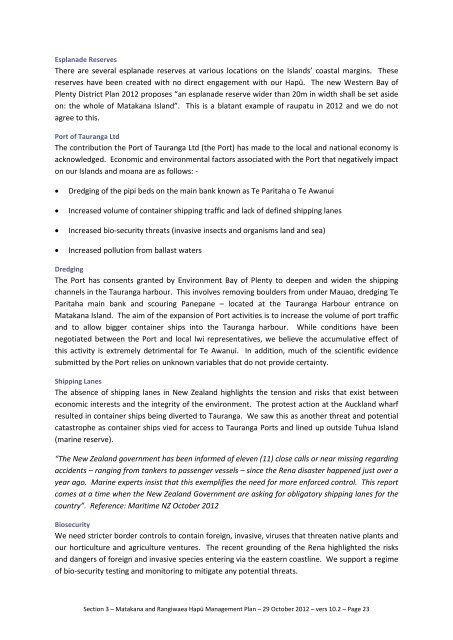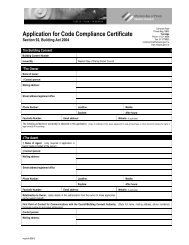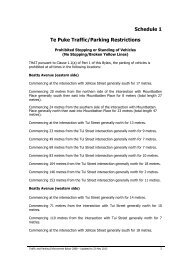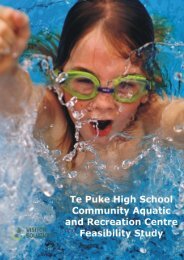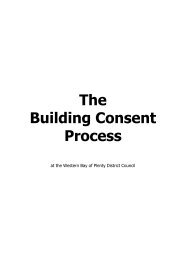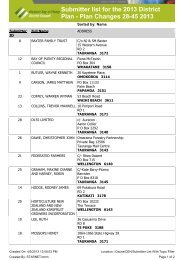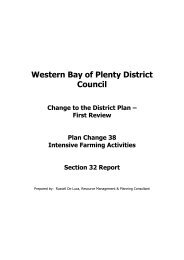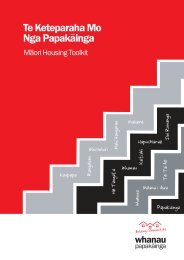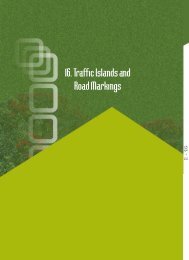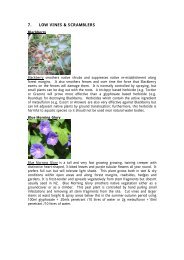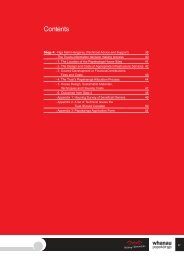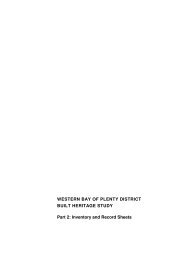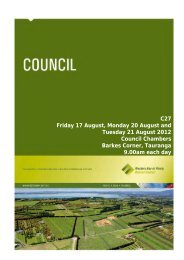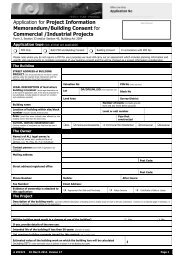Harakeke, Pingao, Kawakawa, Karamu These taonga plants have ...
Harakeke, Pingao, Kawakawa, Karamu These taonga plants have ...
Harakeke, Pingao, Kawakawa, Karamu These taonga plants have ...
You also want an ePaper? Increase the reach of your titles
YUMPU automatically turns print PDFs into web optimized ePapers that Google loves.
Esplanade Reserves<br />
There are several esplanade reserves at various locations on the Islands’ coastal margins. <strong>These</strong><br />
reserves <strong>have</strong> been created with no direct engagement with our Hapū. The new Western Bay of<br />
Plenty District Plan 2012 proposes “an esplanade reserve wider than 20m in width shall be set aside<br />
on: the whole of Matakana Island”. This is a blatant example of raupatu in 2012 and we do not<br />
agree to this.<br />
Port of Tauranga Ltd<br />
The contribution the Port of Tauranga Ltd (the Port) has made to the local and national economy is<br />
acknowledged. Economic and environmental factors associated with the Port that negatively impact<br />
on our Islands and moana are as follows: -<br />
• Dredging of the pipi beds on the main bank known as Te Paritaha o Te Awanui<br />
• Increased volume of container shipping traffic and lack of defined shipping lanes<br />
• Increased bio-security threats (invasive insects and organisms land and sea)<br />
• Increased pollution from ballast waters<br />
Dredging<br />
The Port has consents granted by Environment Bay of Plenty to deepen and widen the shipping<br />
channels in the Tauranga harbour. This involves removing boulders from under Mauao, dredging Te<br />
Paritaha main bank and scouring Panepane – located at the Tauranga Harbour entrance on<br />
Matakana Island. The aim of the expansion of Port activities is to increase the volume of port traffic<br />
and to allow bigger container ships into the Tauranga harbour. While conditions <strong>have</strong> been<br />
negotiated between the Port and local Iwi representatives, we believe the accumulative effect of<br />
this activity is extremely detrimental for Te Awanui. In addition, much of the scientific evidence<br />
submitted by the Port relies on unknown variables that do not provide certainty.<br />
Shipping Lanes<br />
The absence of shipping lanes in New Zealand highlights the tension and risks that exist between<br />
economic interests and the integrity of the environment. The protest action at the Auckland wharf<br />
resulted in container ships being diverted to Tauranga. We saw this as another threat and potential<br />
catastrophe as container ships vied for access to Tauranga Ports and lined up outside Tuhua Island<br />
(marine reserve).<br />
“The New Zealand government has been informed of eleven (11) close calls or near missing regarding<br />
accidents – ranging from tankers to passenger vessels – since the Rena disaster happened just over a<br />
year ago. Marine experts insist that this exemplifies the need for more enforced control. This report<br />
comes at a time when the New Zealand Government are asking for obligatory shipping lanes for the<br />
country”. Reference: Maritime NZ October 2012<br />
Biosecurity<br />
We need stricter border controls to contain foreign, invasive, viruses that threaten native <strong>plants</strong> and<br />
our horticulture and agriculture ventures. The recent grounding of the Rena highlighted the risks<br />
and dangers of foreign and invasive species entering via the eastern coastline. We support a regime<br />
of bio-security testing and monitoring to mitigate any potential threats.<br />
Section 3 – Matakana and Rangiwaea Hapū Management Plan – 29 October 2012 – vers 10.2 – Page 23


